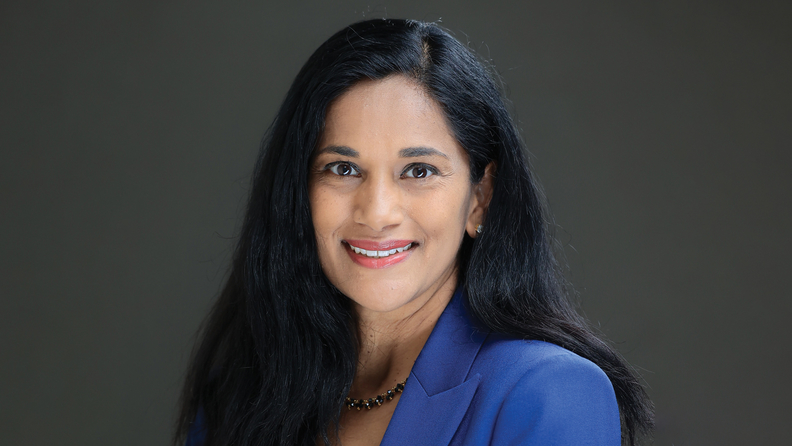Institutional Investor is proud to recognize leaders within the allocator community for their outstanding contributions to portfolio development at the second annual AlphaEdge Recognition Dinner. Prior to the event, we sat down with Harisha Koneru Haigh, recognized in the category of Most Influential Women in Investment Management.
Harisha heads into her twentieth year at Northwestern University’s endowment as Managing Director of the $14 billion endowment since 2005. She is a graduate of the Washington University in St. Louis, where she received a Bachelor of Science in Business Administration.
After two years as a financial analyst at ABN Amro, a large Dutch bank, she received her MBA in Strategy and Finance from the Kellogg School of Management at Northwestern University, while working full-time at PPM America Capital Partners. She then spent a year in London working for PPM’s sister company which is now known as Silverfleet Capital. At Northwestern, she spends the majority of her time on the private and public equity portfolios and as a member of the leadership team her responsibilities include asset allocation, endowment strategy, risk management and internal manager approvals as a member of the internal investment committee.
The following has been edited for length and clarity.
What is the biggest challenge facing the industry today?
 I think noise and distractions are the biggest challenges. With data exploding plus more efficient and persistent marketers, we are inundated. It is easy to get lost in the data. I enjoy sitting in a quiet room, taking a step back and thinking through an investment idea, a challenge or a strategy. I believe we have too little time to do that these days.
I think noise and distractions are the biggest challenges. With data exploding plus more efficient and persistent marketers, we are inundated. It is easy to get lost in the data. I enjoy sitting in a quiet room, taking a step back and thinking through an investment idea, a challenge or a strategy. I believe we have too little time to do that these days.
During Covid, people said, “You’re never going to meet in-person.” The reality is that it’s become Zoom and in-person. Placement agents and IR people want to meet you in person; the first meeting is not on Zoom anymore and it’s rarely 30 minutes.
Which part of your portfolio gets you most excited?
I have been doing this for 20 years at Northwestern University, and it’s really fun to see the next generation develop. They may be leading deals or even leading firms and it’s interesting to see, “Where do they thrive? Where do they need help?”
You can act as a coach, and if you have that trusted relationship, perhaps you can help them avoid mistakes and or become more efficient.
Who were your mentors, and what made you get into the allocator role?
I would say I admire and had guidance from the people I worked with. I was able to learn something from every person I reported to, and it has been really important to my development.
Being able to work for my alma mater is really special – doing well while doing good is really meaningful – and what keeps me in the job is learning something every day.
What’s the biggest thing that’s changed in the last 20 years?
Certainly, on the alternative side, investment management has become a business: Generating returns is not driving the economics as much as it did previously. I think we are in the early innings of GP stakes, and we will have to see how the unintended consequences unfold.
If you were not an allocator, what would you be doing today?
I am fascinated by grant-making and believe it would be gratifying to work for a foundation or in the government. I think there are similarities in our world but with the potential for more impact and seeing the change you could make.
If you could change one thing about the industry and make an actual difference, what would it be?
I would like to see people focus more on the long term, which I know is hard. People say they are long-term investors, but performance is reviewed every six or 12 months. It goes back to incentives: Show me how someone is paid, and I’ll show you how they behave.
Bringing more focus to be long term would be helpful, but it also depends on the investment strategy. The time period could be seven to 10 years on the private side and three to five years on the public side. My overarching principal is that there are many ways to make money; your strategy to generate returns should be bespoke to your institution. FOMO and herding are distractions.
For more content of Investor Week, visit the group here.
To discuss the content of this article or gain access to like content, log in or request membership here.
